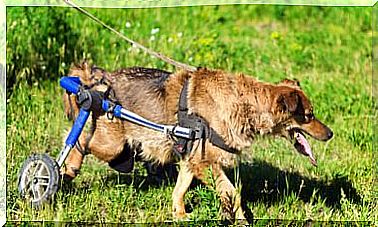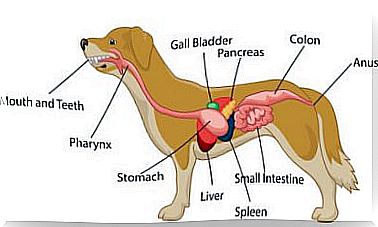Meanings Of Barking In Dogs

One of the key elements in the communication of dogs is their vocalizations. We can easily understand dogs when they communicate, but we have to take into account the context in which they do so. If you want to understand the meaning of barking in dogs, these are its keys.
Understand barking in dogs
Canine communication is easy to understand when you take various factors into account. Dogs are always communicating with each other, with us and with the rest of the environment: they do not only do it through their voice.
Your body posture is very important, as is the movement of your body; the signs of calm or the movement of the tail are elements that are constantly transmitting information to us. But to understand this information we also have to take the context into account.
That is, the meanings of barking in dogs are not the same if they occur in a park playing with their companions, alone at home or during a very noisy moment, such as on a very busy street. These are some of the keys to understanding barking, but the context should not be forgotten:
Excitement
The barking of excitement is very characteristic, because it is also usually accompanied by a lot of movement in the tail or in the body in general. The dog wants to convey to us that it is very nervous or excited, both for better and for worse.

Depending on what situation he is in, the dog will be very happy or overwhelmed by nerves. This bark is characterized by being composed of short, consecutive, and usually quite high-pitched voice blows. It is a bark that humans also make us nervous and may find it annoying.
Frustration
Frustration is another commonly overlooked meanings of barking in dogs. When a dog wants something, it is not able to reach it and this causes discomfort, there are sharp, long barks separated in time.
It can be confused with a bark to attract attention, and usually also has this purpose: the dog lets us know that there is something that he wants to achieve and cannot. For example, a lot happens on the terraces of bars: the dog wants to leave and cannot, so it starts barking.
Afraid
Each dog reacts differently to fear: some are paralyzed, while others are unable to stay still and will wander, bark or even jump. The bark of fear, therefore, can also be different in each animal and at each moment, but it is characterized by:
- Barking at high or low volume.
- Long and slow, or fast and short barks.
- Sometimes they are accompanied by a growl prior to the bark.
Warning
Of all the meanings of barking in dogs, this is perhaps the easiest to identify. They are barks neither short nor long, followed but not fast. In addition, the dog will look for us with his eyes or will be pointing towards what worries him and what he is warning us about.

We will have to decide what our dog is warning us about according to the context and what it is signaling. We will also have to identify if he is barking at us to warn someone else, in case we do not know him.
Learned or wake-up call
Dogs can also bark to get attention and, in fact, it is one of the methods that we respond best to. One of the defining characteristics of this sound is that it stops when we pay attention to it or when the dog achieves its goal.
Normally, the learned bark consists of sounds at a low volume (although they can increase it if they are ignored), spaced a few seconds in time. We could almost say that between barking and barking leaves just enough space to say “shut up!” or not!”.
However, as this bark is learned, over time it can change. His goal is to get us to pay attention to him or give in to something he wants, so he will develop different barks until he finds the one that makes us react before.
Howls for help
It is not a bark in itself, but to ask for help, dogs use a very characteristic sound: howls. The howl is a call for help to your human family or to other dogs, as it is very difficult to confuse it with any other sound.
The dogs howl back to each other, and this is the reason why they also howl when ambulances pass: they feel the need to communicate to the being who is issuing the help that they are not alone and that they are close.
Barking is an important part of canine communication, but it is not the only element of it. The movement and position of the body or facial expressions are elements to consider if you want to understand your dog. And don’t forget the context, as it also influences the meanings of barking in dogs.









